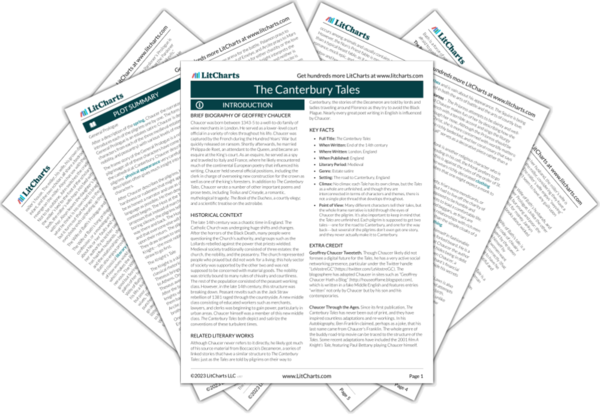AI ToolsNew
Tools to make learning and teaching easier
|
Previous
Clothing and Appearance
|
Literary Allusions Symbol Analysis |
Next
Theme Wheel
|
For al so siker as in principio
Mulier est hominis confusio,––
Madame, the sentence of this Latyn is,
“Womman is mannes joye and al his blis.”
For seint Paul seith that al that writen is,
To our doctrine it is ywrite, ywis;
Taketh the fruyt, and lat the chaf be stile.
